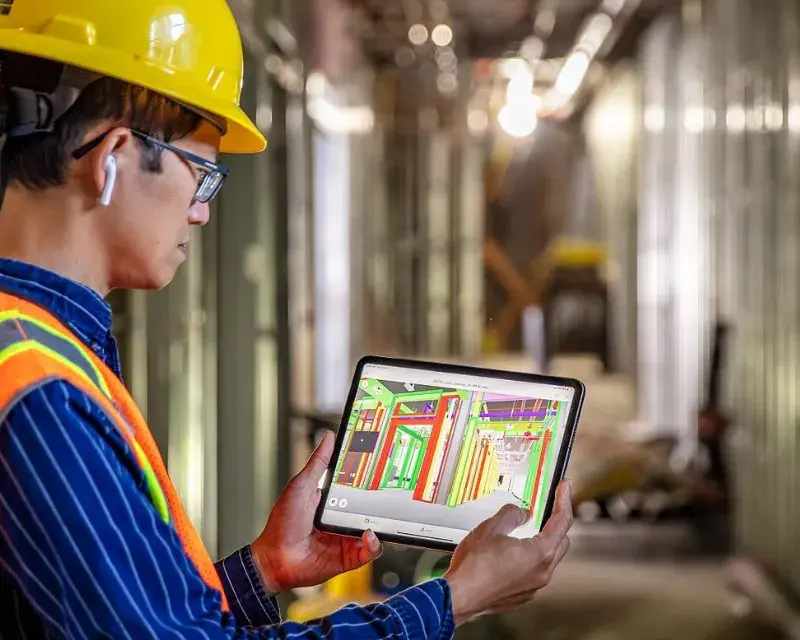In an era where technology is reshaping industries, the construction sector is undergoing a significant digital transformation driven by innovations like Building Information Modeling (BIM) and the Internet of Things (IoT). These technologies are revolutionizing traditional construction practices, improving project efficiency, reducing costs, and enhancing collaboration across all stages of the construction lifecycle.
Understanding Building Information Modeling (BIM)
Building Information Modeling (BIM) is a digital representation of physical and functional characteristics of a building. It is a collaborative process that allows multiple stakeholders to work together on a single platform to plan, design, construct, and manage buildings and infrastructure more efficiently. BIM enables architects, engineers, contractors, and project managers to visualize the entire construction project in a 3D model, integrating various aspects such as geometry, spatial relationships, geographic information, and quantities.
Key Benefits of BIM in Construction
1. Enhanced Collaboration: BIM facilitates seamless collaboration among project teams by providing a centralized platform for sharing information and coordinating activities. Design changes, clash detection, and project updates can be communicated in real-time, reducing errors and improving decision-making.
2. Improved Project Efficiency: BIM streamlines project workflows by optimizing design iterations, scheduling tasks, and managing resources more effectively. Virtual simulations and 4D scheduling enable stakeholders to visualize construction sequences and anticipate potential challenges before they arise, thereby reducing delays and optimizing project timelines.
3. Cost Reduction: BIM helps minimize construction costs through accurate quantity take-offs, material procurement optimization, and clash detection during the design phase. By identifying potential conflicts and inefficiencies early on, project teams can mitigate risks and avoid costly rework during construction.
4. Sustainability: BIM supports sustainable building practices by analyzing energy performance, carbon footprint, and lifecycle assessment of buildings. Design alternatives can be evaluated based on environmental impact, enabling architects and engineers to incorporate green building principles and achieve certification standards more effectively.
Internet of Things (IoT) in Construction
The Internet of Things (IoT) refers to the network of interconnected devices embedded with sensors, software, and connectivity, enabling them to collect and exchange data. In construction, IoT devices are integrated into building components, machinery, and equipment to monitor performance, track assets, and improve operational efficiency throughout the construction lifecycle.
Applications of IoT in Construction
1. Smart Monitoring: IoT sensors monitor construction site conditions in real-time, including temperature, humidity, noise levels, and air quality. Data analytics provide insights into environmental conditions, worker safety, and equipment performance, enabling proactive decision-making and risk management.
2. Asset Tracking: IoT-enabled tracking devices monitor the location and status of construction materials, tools, and equipment. Real-time data ensures inventory management, prevents theft, and optimizes resource allocation across multiple project sites.
3. Predictive Maintenance: IoT sensors collect data on machinery and equipment performance, detecting potential failures or maintenance needs before they occur. Predictive analytics and condition-based monitoring reduce downtime, extend asset lifespan, and improve overall productivity on construction sites.
4. Safety and Security: IoT technologies enhance construction site safety by monitoring worker activities, enforcing safety protocols, and alerting supervisors to potential hazards or emergencies. Smart wearable devices and automated safety systems mitigate risks and ensure compliance with regulatory standards.
Case Studies and Industry Trends
Leading construction firms worldwide are embracing BIM and IoT to drive innovation and achieve operational excellence:
– Skanska: Implemented BIM across projects to improve collaboration, reduce costs, and enhance project delivery efficiency.
– Balfour Beatty: Leveraged IoT for asset management and predictive maintenance, achieving significant cost savings and operational improvements.
– Turner Construction: Integrated BIM and IoT to optimize construction logistics, streamline supply chain management, and enhance project sustainability.
Conclusion
Digital transformation through Building Information Modeling (BIM) and the Internet of Things (IoT) is revolutionizing the construction industry, empowering stakeholders with advanced tools and technologies to build smarter, safer, and more sustainable infrastructure. Embracing BIM and IoT enables construction firms to drive innovation, improve project outcomes, and meet the evolving demands of modern construction projects. As technology continues to evolve, the integration of BIM and IoT will play a pivotal role in shaping the future of construction, delivering value, efficiency, and resilience to stakeholders worldwide.






